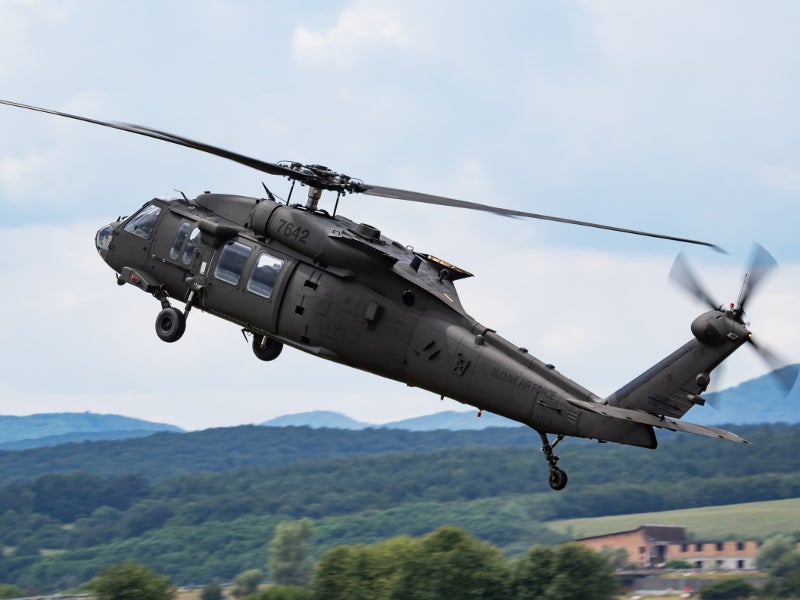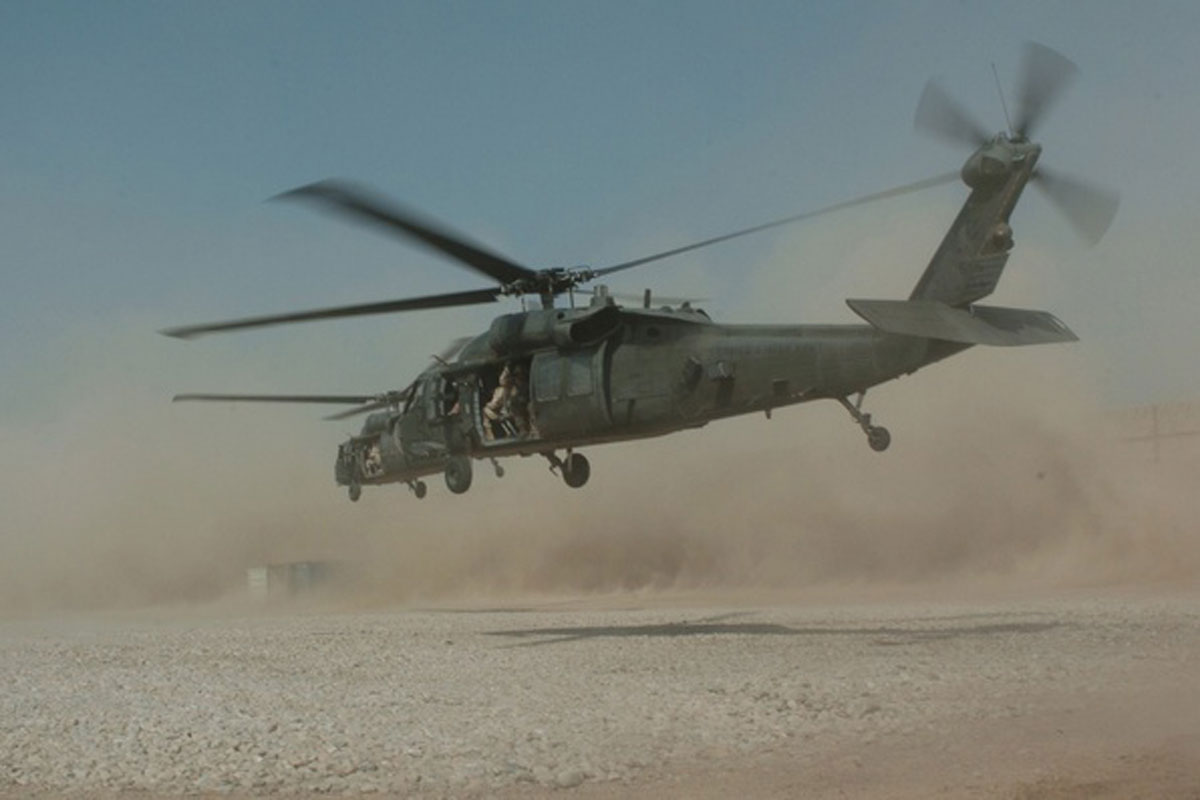Achieving Quality: Trick Methods for UH 60 Helicopter Maintenance
Wiki Article
Recognizing the Mechanics and Engineering Behind Uh 60 Helicopters
The UH-60 helicopter, generally referred to as the Black Hawk, stands as a peak of contemporary rotorcraft technology, embodying a mix of robust design and intricate technicians. From its creation to its existing versions, the development of this aircraft showcases a blend of development and usefulness. As we peel off back the layers of the UH-60's layout, a world of complex systems and meticulous engineering emerges. Understanding the mechanics and design behind this flexible airplane reveals a realm where precision fulfills power, and where each part plays a crucial function in achieving trip.Background of UH-60 Helicopters
The history of UH-60 helicopters traces back to the late 1970s when the United States Military sought a sophisticated and flexible utility helicopter to change its aging fleet. In feedback to this requirement, the Sikorsky Aircraft Company developed the UH-60 Black Hawk helicopter. Presented in 1979, the UH-60 rapidly became a staple in military operations because of its remarkable capabilities.
The UH-60 was designed to stand out in a variety of missions, consisting of army transportation, medical discharge, electronic war, and special procedures. Its ability to adapt to various roles made it a useful asset to the U.S. uh 60. Military and various other army forces around the globe
Throughout the years, the UH-60 platform has actually gone through a number of upgrades and variants to boost its performance and keep pace with developing mission demands. These helicopters have actually seen substantial solution in disputes such as the Gulf Battle, Afghanistan, and Iraq, showcasing their reliability and versatility in varied operational settings. The UH-60's abundant history is a testament to its enduring legacy as a top utility helicopter.

Engine and Power Equipments
Utilizing cutting-edge propulsion technology, UH-60 helicopters are equipped with innovative engine and power systems to guarantee optimum performance and integrity in a series of operational scenarios. The UH-60, commonly called the Black Hawk, is powered by 2 General Electric T700-GE-701D engines, each efficient in supplying up to 1,940 shaft horsepower. These turboshaft engines provide the necessary drive for the helicopter to perform its goals successfully, including army transportation, medical emptying, and battle support.
Rotor System and The Rules Of Aerodynamics
Exactly how do the rotor system and aerodynamics of UH-60 helicopters add to their functional effectiveness and trip capacities? The blades system of the UH-60 helicopter plays a vital role in supplying lift and propulsion. The UH-60 includes a four-bladed, fully articulated blades system that enables for high ability to move and stability throughout flight. This design allows the helicopter to carry out a variety of missions, from transport and clinical emptying to battle operations.Aerodynamics additionally play a key role in the performance of UH-60 helicopters. The streamlined fuselage and rotor blade design reduce drag, enabling the helicopter to accomplish greater rates and far better gas effectiveness. The aerodynamic style of the UH-60 additionally adds to its capacity to run in diverse environmental conditions, including hot temperature levels and high altitudes.
Avionics and Flight Control Systems

In its intricate sychronisation with the blades system and aerodynamics of UH-60 helicopters, the avionics and flight control systems form a crucial network of innovations forming the aircraft's operational abilities. Avionics include the digital systems utilized for interaction, navigation, and keeping track of numerous aircraft functions. In the UH-60, these systems consist of digital display screens, communication radios, general practitioner navigating, weather condition radar, and auto-pilot systems. These avionics systems provide essential information to the pilots, boosting situational understanding and ensuring secure and effective procedure of the helicopter.
The trip control systems of the UH-60 are responsible for converting the pilot's inputs into the proper modifications to the rotor system, guaranteeing steady trip and ability to move. These systems include hydraulic actuators, servos, and computer systems that collaborate to manage the tail and major rotors, in addition to other trip control surface areas. By specifically taking care of the helicopter's trip dynamics, these systems make it possible for pilots to perform a vast array of objectives, from transport and search-and-rescue to combat procedures, web with accuracy and confidence.
Duty and Applications in Aeronautics
The role and applications of avionics and trip control systems in aviation are integral to ensuring the effective and safe procedure of aircraft, consisting of UH-60 helicopters. Avionics systems in UH-60 helicopters include a range of electronic systems that aid in navigating, communication, tracking, and controlling various airplane features. These systems include electronic display screens, autopilot systems, interaction radios, GPS navigation tools, and weather condition radar. Trip control systems play a vital function in maneuvering the helicopter airborne, preserving security, and making certain specific activities. The fly-by-wire innovation utilized in contemporary UH-60 helicopters translates pilot inputs right into digital signals, which are after that interpreted by the trip control computer systems to adjust the airplane's control surfaces. In addition, these systems integrate safety and security functions such as autopilot settings, surface recognition advising systems, and security enhancement systems to enhance the total security and functional capabilities of the UH-60 helicopters in various objectives, consisting of troop transport, clinical evacuation, search and rescue, and airborne firefighting.Conclusion
To conclude, the UH-60 helicopter is a flexible airplane with an abundant history and advanced engineering. Its engine and power systems, rotor system, the rules of aerodynamics, avionics, and trip control systems all function with each other to make it a trusted and efficient maker. The UH-60's function and applications in air travel are huge, varying from military operations to browse and save objectives. Its proceeded advancement and use demonstrate its relevance in the area of aviation (uh 60).In its detailed coordination with the rotor system and aerodynamics of UH-60 helicopters, the avionics and trip control systems form an essential network of modern technologies forming the aircraft's operational abilities.The flight control systems of the UH-60 are accountable for equating the pilot's inputs into the ideal changes to the blades system, making sure secure trip and ability to move. Avionics advice systems in UH-60 helicopters incorporate an array of digital systems that aid in navigating, communication, monitoring, and controlling numerous airplane functions. Additionally, these systems incorporate security functions such as autopilot settings, terrain awareness advising systems, and stability enhancement systems to enhance the overall safety and functional capacities of the UH-60 helicopters in numerous objectives, consisting of army transport, medical emptying, search and rescue, and airborne firefighting.
Its engine and power systems, blades system, aerodynamics, avionics, and trip control systems all work together to make it a trustworthy and check over here effective maker.
Report this wiki page